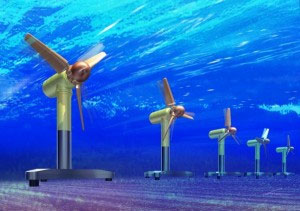To help wave and tidal energy take off, the Department of Energy (DOE) is turning to computer coders for help.
Unlike hydropower, there are hundreds of potentially viable technologies in this emerging industry – that captures energy from waves, tides and currents in rivers and oceans – which have to be evaluated on their technical and economic viability.
To move this along as quickly as possible, DOE’s Water Power Program has launched a competition among computer coders, with the goal of developing software that models the workings of wave energy. Specifically, coders are competing on how a wave energy converter device responds to ocean waves of various heights and time periods.

Partners for the Open-WARP Challenge (Open Wave Analysis and Response Program) are NASA’s Center of Excellence for Collaborative Innovation (CoECI) and Harvard Business School.
TopCoder – one of the world’s largest programmer communities – is running Open-WARP, which consists of a series of contests with cash prizes.
Past coding competitions have generated high quality code quickly and cost effectively, says DOE. They have been successfully used to solve problems such as monitoring air pollution in cities and optimizing power generation at the International Space Station.
The winning Open-WARP code will become part of the Wave Energy Converter Simulation (WEC-Sim), open-source software that simulates the performance of wave energy designs in generating electric power. Engineers are currently developing the software at DOE’s National Renewable Energy Lab and Sandia National Lab.
Check out DOE’s Water program:

Open-WARP is a great idea for a badly needed WEC development tool. My only concern is that coders will waste time developing code focused on obsolete 1st generation WEC concepts like spar buoys, OWCs, articulating rafts and other “point absorber” type WECs which require large float areas and volumes per meter of intercepted wave front with volumes increasing as the cube of increased capture width (resulting in terrible economies of scale). Vessel volume drives/dictates cost for marine vessels. The only WEC concepts likely to survive the inevitable WEC technology shakeout are deep water deployable wave “barrier” or “terminator” type WECs which are elongated and oriented (preferably self-orienting) parallel to oncoming wave fronts. Even these WECs will require capturing a majority of BOTH heave and surge wave energy components and need efficient power take-off systems (probably geared or direct drive multi-poled low RPM, high torque, rotary generators). I would be glad to suggest to DOE EERE several promising wave front parallel wave terminator type WECs which any useful WEC code should cover. Thank You, John Rohrer, RTI Wave Energy